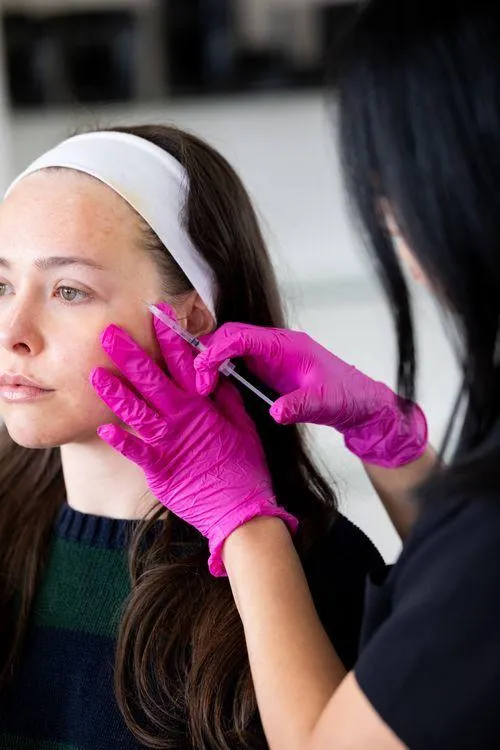Botox Explained: Benefits, Safety, Cost & What to Expect
Botox has become a household name in aesthetic and medical circles. Whether you’re hoping to smooth out fine lines or find relief from migraines, Botox has a wide range of benefits that go beyond just beauty. Whether you’re considering your first treatment or researching how it works, this in-depth guide will cover everything you need to know, backed by science, expert experience, and real-world application.

What exactly is Botox—and why is everyone talking about it?
Understanding Botox (Botulinum Toxin)
Botox® is the well-known name for a purified protein made from botulinum toxin type A, which comes from a naturally occurring bacterium called Clostridium botulinum. Although the word “toxin” might sound alarming, Botox is safe when used correctly. Approved by the U.S. Food and Drug Administration (FDA), it has been used for both cosmetic and medical treatments for over two decades.
Botox temporarily blocks nerve signals in targeted muscles, causing them to relax. That’s why Botox works so well on dynamic wrinkles—the kind that show up from everyday expressions like frowning or squinting.
All skin tones and types
Sensitive or reactive skin
People looking for gentle yet visible skin improvement
How Does Botox Work?
It works by temporarily stopping a chemical messenger in your body—acetylcholine—from telling your muscles to move, which helps relax them. That’s how it helps those muscles relax. When injected, Botox prevents the muscle from receiving the signal to contract, thereby softening wrinkles and easing symptoms like muscle stiffness or nerve pain.
This process is localized, meaning only the injected muscle is affected, not the surrounding areas. Results are temporary, making Botox a low-risk, non-permanent option.
Popular Cosmetic Applications
Botox is best known for its ability to reduce signs of aging. Common cosmetic concerns it addresses include:
Forehead wrinkles
Frown lines (between the eyebrows)
Crow’s feet (around the eyes)
Smile lines
Under-eye wrinkles
Masseter hypertrophy (jaw slimming)
Using Botox for masseter muscles has grown in popularity for people seeking a more slender jawline or relief from TMJ pain caused by jaw clenching.
Medical Conditions Treated with Botox
Botox isn’t just for beauty. Its therapeutic uses are FDA-approved for several chronic conditions, including:
Chronic migraines
Hyperhidrosis (excessive sweating)
Overactive bladder
Cervical dystonia (neck spasms)
Strabismus (crossed eyes)
Blepharospasm (uncontrolled blinking)
By calming muscle activity and nerve signaling, Botox can improve the quality of life for patients suffering from these conditions.
Can Botox Help Reduce Pain?
Yes, particularly for patients with migraines, TMJ disorders, or muscle spasticity. For people dealing with chronic migraines, Botox is injected at specific spots across the head and neck to help reduce how often and how intensely headaches strike. Over time, this may reduce the frequency and intensity of headaches by calming nerve hyperactivity.
What Is Botox Made Of?
Botox is composed of three main ingredients:
Botulinum toxin type A – the active component
Human albumin – a protein stabilizer
Sodium chloride – salt, used for dilution
This formula is highly purified and used in minute doses to ensure patient safety and efficacy.
Is Botox Safe?
When administered by a qualified, licensed provider, Botox is considered very safe. It’s FDA-approved, supported by numerous clinical studies, and used worldwide. Side effects are typically mild and temporary, but choosing a certified injector is crucial to avoid risks like asymmetry or unwanted muscle weakness.
Botox Treatment: What to Expect from Start to Finish
How Should I Prepare for Botox?
Preparing for Botox is simple, but a few precautions will help minimize side effects:
Avoid alcohol 24 hours before your appointment.
Stop taking blood thinners or anti-inflammatories (like aspirin or ibuprofen) 2–3 days beforehand—if your doctor approves.
Let your provider know if you're taking medications or have any medical conditions
What Happens During a Botox Treatment?
Botox procedures are quick, often referred to as a lunchtime treatment.
Step-by-step:
Your provider cleans the treatment area.
You may receive numbing cream or ice for comfort.
Botox is gently injected into the precise muscles being treated using a very fine needle, making the process quick and minimally uncomfortable. Most people describe it as feeling like a quick little pinch.
The procedure usually takes 10–20 minutes.
Most people experience minimal discomfort, often compared to a small pinch.
Botox Aftercare: Do’s and Don’ts
To ensure optimal results and reduce side effects:
After your session, try not to rub or massage the treated area for at least 24 hours. This helps make sure the Botox stays exactly where it’s needed—and doesn’t drift into nearby areas it shouldn’t.
Avoid strenuous exercise, alcohol, and lying down flat for 4–6 hours.
Stay upright and keep your head elevated.
Results are not immediate—it can take a few days for the effects to begin and up to two weeks for full results.
How Often Should You Get Botox?
On average, Botox lasts 3 to 4 months. Some people might notice their results wearing off a bit sooner—or lasting a little longer—depending on things like their metabolism, how strong their facial muscles are, and how often they use those muscles.
Metabolism
Muscle strength
Injection area
Sticking to regular touch-up appointments helps your results stay smooth, balanced, and effortlessly natural over time.
Benefits vs. Risks of Botox
Are There Any Side Effects?
Most side effects are mild and temporary, including:
Redness or swelling at the injection site
Mild bruising
Headache or flu-like symptoms
Rare side effects include drooping eyelids or eyebrows, especially if the Botox migrates. These usually resolve within weeks.
Who Should Avoid Botox?
Botox isn’t recommended for:
Pregnant or breastfeeding individuals
Everyone’s body is different, so some people might see their results wear off a little sooner—or last a bit longer—based on a few factors like metabolism and muscle strength.
Anyone allergic to Botox ingredients
Always consult a healthcare provider before treatment if you’re unsure.
Recovery, Results, and Longevity
When Will You See Results?
Most patients begin to see changes within 3 to 5 days. Full results typically appear around 7 to 14 days after treatment.
How Long Does Botox Last?
Botox results generally last 3 to 4 months, though this can vary. For example:
Forehead or frown lines may fade quicker due to frequent movement.
Masseter or migraine treatments may last longer due to deeper muscle targeting.
Keeping up with regular treatments can make results last longer over time.
When to Call Your Provider
Red Flags After Botox
Call your healthcare provider if you experience:
Difficulty breathing or swallowing
Facial muscle weakness outside the treated area
Severe or prolonged bruising, swelling, or pain
These are rare but serious side effects that require immediate attention.
Additional Questions About Botox
Does Botox Hurt?
Most people describe the feeling as just a quick, tiny pinch—over before you know it. A skilled injector will make the process as comfortable as possible. Numbing cream is available if you're sensitive to needles.
Can You Get Botox While Pregnant or Breastfeeding?
Botox has not been proven safe during pregnancy or breastfeeding. It’s best to delay treatment during these times.
Are There Other Types of Botulinum Toxins?
Yes. Besides Botox®, other brands include:
Dysport®
Xeomin®
Jeuveau®
Each has different formulations, diffusion rates, and pricing. Your provider can recommend the best option based on your goals.
Does Insurance cover Botox?
Cosmetic Botox is not covered by insurance. However, if you’re getting Botox for a medical condition like chronic migraines or hyperhidrosis, some insurance providers may cover part or all of the treatment.
Final Thoughts: Is Botox Right for You?
Botox is a versatile treatment offering both cosmetic and therapeutic benefits. With minimal downtime, quick sessions, and proven results, it remains one of the most sought-after non-surgical procedures in the world.
Whether you're aiming to reduce fine lines or treat chronic migraines, consult a certified injector or medical professional to create a personalized treatment plan.
Frequently Asked Questions About Botox
What does Botox do exactly?
Botox works by temporarily relaxing specific muscles—it does this by blocking the nerve signals that tell them to contract. This leads to smoother skin in areas affected by dynamic wrinkles, such as the forehead, crow’s feet, and frown lines. In medical settings, Botox helps manage conditions like chronic migraines, TMJ disorders, overactive bladder, and muscle spasms by calming overactive muscle or nerve activity.
Essentially, Botox interrupts the “message” from your nerves that tells certain muscles to move, providing both cosmetic rejuvenation and symptom relief in medical contexts.
What is the downside of Botox?
While Botox is considered safe when administered by a trained professional, it does have some potential downsides:
Temporary results – lasts only 3–4 months
Possible side effects like bruising, swelling, or a mild headache
Risk of overuse, which can lead to a “frozen” or unnatural look
Uneven results or drooping if improperly injected
Keep in mind, Botox works best on dynamic wrinkles—the ones that appear when you move your face. It’s less effective on deeper, static lines that are visible even when your face is relaxed.
These risks are minimal when you go to an experienced, board-certified provider who understands facial anatomy and proper injection technique.
How long does Botox last?
Botox results typically last 3 to 4 months, though this varies depending on the treatment area, the individual’s metabolism, and the dosage used. Some people may see effects begin to fade after 2.5 months, while others enjoy results for up to 5 months, especially after multiple treatments.
To keep your results looking fresh and natural, it’s a good idea to schedule maintenance treatments every 3 to 4 months.
We want what’s best for you and your skin. Tell us your concerns and we’ll work with you to meet your goals. We have the technology and expertise to make beautiful things happen. Each journey begins with an introductory consultation. Schedule one today!
EXPLORE
FOLLOW US
SIGN UP TO RECEIVE SPECIALS >
Emmanuel Skinscience is a brand owned and operated by Skinscience PLLC.
© 2026 All Rights Reserved. Terms of Use and Privacy Policy
